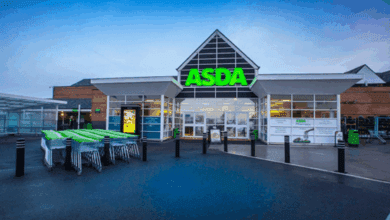Agility without complexity: navigating retail compliance the right way
Retail Express’ Ed Betts says retailers must build the agility to get ahead of regulatory pressure and market fluctuations before it is too late

Is your retail business future ready? Whether dealing with the ramifications of major political shifts, changes in legislation, economic uncertainty, or the difficulty of convincing cautious customers to spend, it is critical to plan a safe route through what lies ahead.
With retailers already in the midst of another challenging year, they cannot afford to set and forget their plans. Changing market dynamics must be met head on. It is vital that retailers can react often at short notice to the difficulties – and opportunities – presented to them while maintaining the flexibility to grow.
Agility is the differential which will separate those businesses which thrive in a challenging environment and those that don’t. However, being agile requires the development of systems and processes which form a strong business foundation, one which specifically allows for pivots and sidesteps which do not cause seismic repercussions in other areas of the business.
Real agility, in today’s market, means moving away from legacy systems with outdated manual processes and using proven tools, data analysis, and artificial intelligence to support and streamline operations. With the support of a robust algorithmic platform, retailers can make strong, forward-thinking decisions that are backed up by truth, prediction, and a consistent methodology.
Staying ahead of regulations
Under legacy retailing models, it is already difficult enough to navigate a regulatory landscape littered with potholes: the time and effort it takes to remain compliant can prove prohibitively burdensome. Legislation within the grocery and retail space will inevitably continue to expand.
In food, for example, further regulations from 1 October 2024 surrounding the provenance of meat and dairy products sold across the UK will be required to display ‘Not for EU’ which demands pinpoint attention to labelling. And the need to adhere to regulations surrounding the sale and advertisement of high fat, salt and sugar (HFSS) products presents an additional hurdle.
The good news is that regulations move at the speed of bureaucracy, whereas retailers can, by making the right choices, demonstrate a far faster pace. Many of retail’s most sluggish processes can be overcome by modernising the processes underpinning them – not just streamlining product labelling or the categorisation required to highlight HFSS goods, but also simplifying perennial pain points like shelf-edge displays, promotional price establishment or loyalty card pricing.
Safe, effective promotions
Key retail activities are as important to align as products. Regulations dictate that promotions, for example, must be compliant with advertising rules, meet price establishment timeframes, and be fully supported by all links of the chain from supplier to shop floor to media placement. Deals need stock, and they need to fall in line with the rules.
Poor planning can cause that chain to break, leading to last minute changes and less-than-ideal replacements, chosen not because they are the best, but simply because they are available or applicable. Consistent internal alignment is the only way to avoid a chaotic process. Stability and reliability are vital for retailers looking to maintain goodwill.
Failure to fulfil a promotion upsets suppliers, erodes customer feeling, and wastes marketing spend. Worse, a failure to comply with the boundaries set by the likes of the Advertising Standards Authority’s CAP and BCAP codes in the process of performing that promotion could open one’s business up to serious and potentially damaging fines or punishments.
And it only takes one slip, one missed message, one department failing to be brought on board for any of this to happen. For retailers to continue to strive for growth, they must ensure that they are properly aligned in all quarters by unifying data and employing the tools required to extract the truth from it.
Precise plans with flexibility
While retailers work to deliver the Joint Business Plan (JBP) they have made with their suppliers, plans inevitably need to change. As opportunities and challenges arise, the need to update that plan introduces lengthy and complex negotiations into the process. Even tracking the progress of existing arrangements takes time and effort.
JBPs have to be relatively rigid as there is no getting around the often-lengthy production cycle of key products. But it could be argued that an AI-driven focus makes JBP management far more flexible and simple than the process once was. Growth opportunities can be highlighted in good time, much of the burden of negotiation can be automated, and order volumes can be estimated using tools which know the market intimately.
Retailers also gain the ability to move with the times, not just with the plan. AI-driven tracking does not only aid in ensuring the plan is executed smoothly – it spots underperforming products, those for which wholesale prices have risen too high, and can help manage the de-listing process in compliance with the Groceries Supply Code of Practice’s strict rules.
Plotting a course to success
It is one thing to be agile, but quite another to be safely agile. Regulations are there to ensure that retailers cannot act outside their boundaries. But there is nothing stopping them from changing the way their business works, piece by piece, and erecting sturdy guardrails which enable them to move quickly without stepping over the line.
The future of agile retail begins with a strong foundational system powered by AI, itself bound by strict rules, which can help turn data insights into decisive and effective action. A future-ready business is one which is not only aware of retail’s changing landscape, but also equipped to navigate it. Those that fail to prepare will be left behind.
Discover real-time AI powered merchandising and collaborative planning:
https://www.retailexpress.com/







